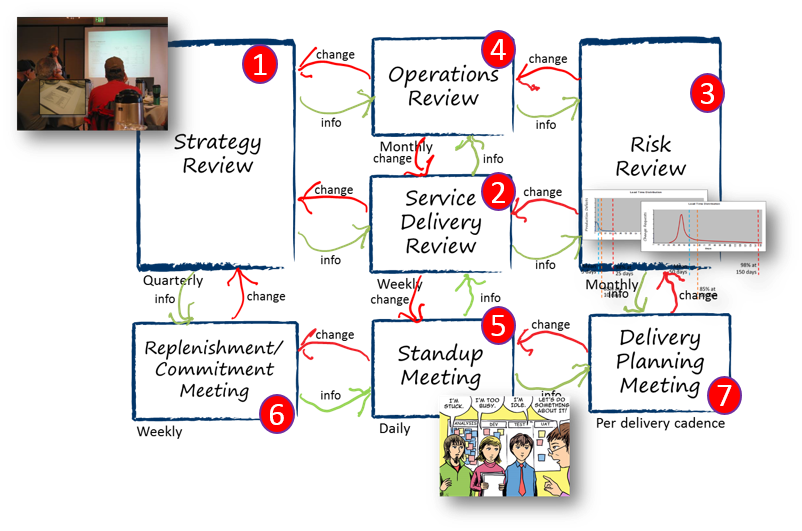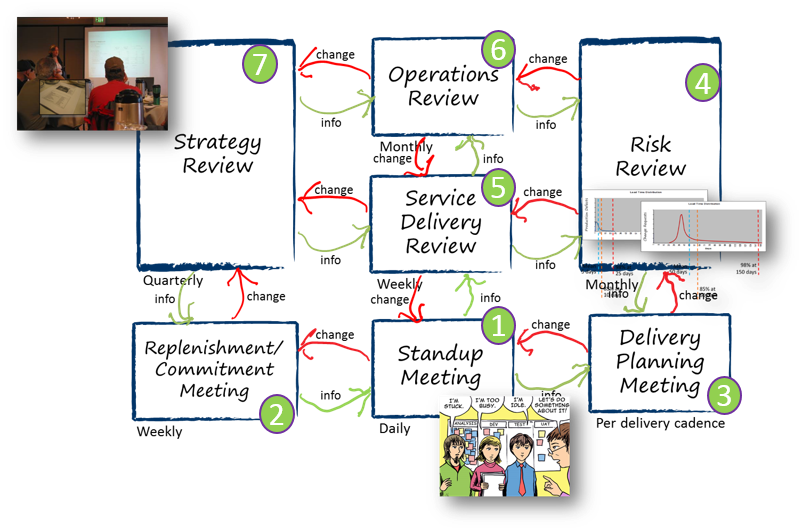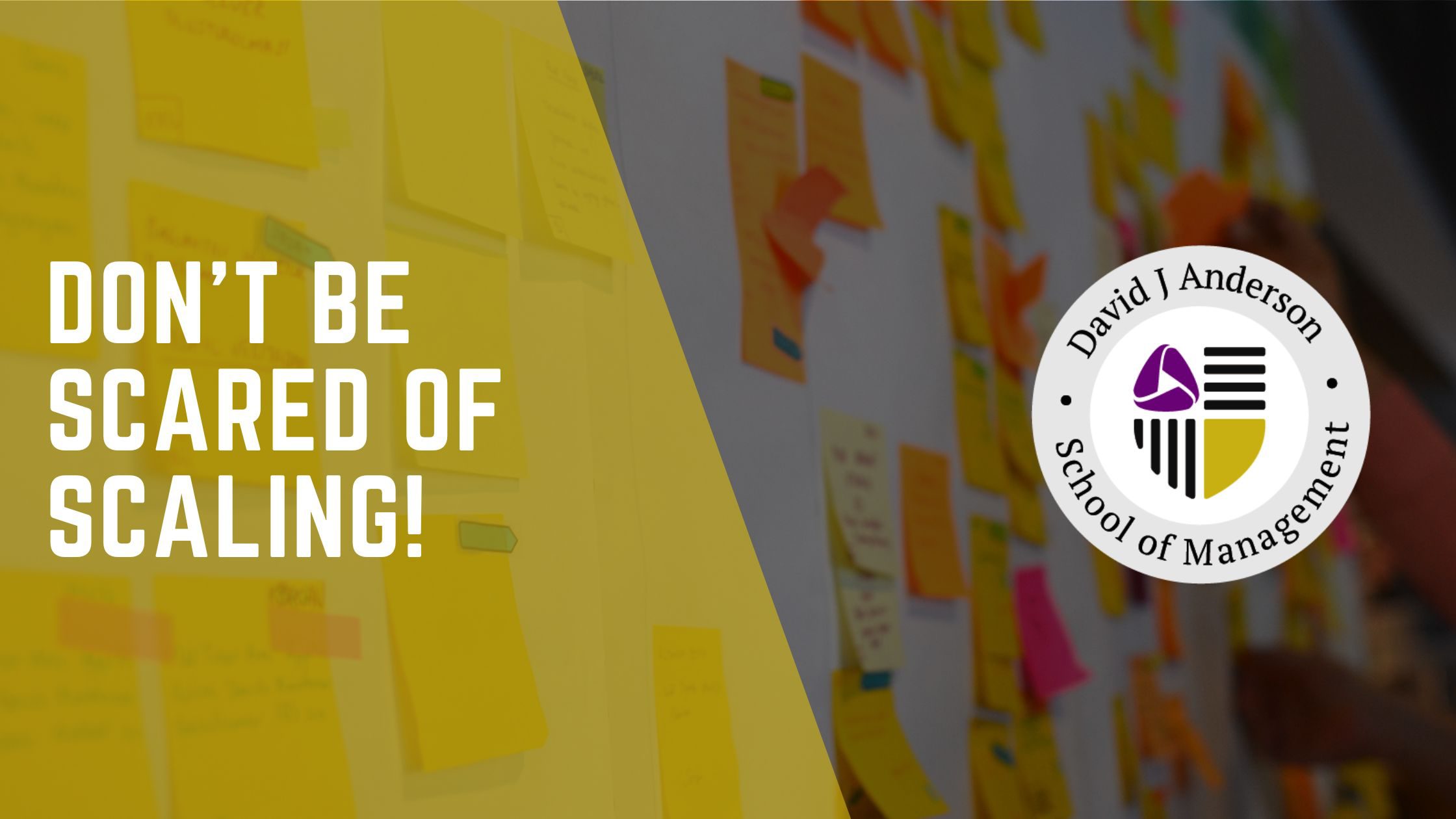ESP compared to Kanban Method
I’ve been giving some careful thought to why it became necessary to create the concept of Enterprise Services Planning.
At the most fundamental level, ESP was necessary to provide a container for the collection of things we were teaching that were beyond kanban systems and beyond the scope of the Kanban Method. These were the things that enabled the optimal and effective use of kanban systems – topics such as: probabilistic forecasting and statistical analysis; qualitative risk assessment; real option theory; connecting strategy to operational mechanisms such as Kanban capacity allocation; and so forth. ESP represents a system of management for an entire professional services business. It isn’t just an IT thing and it certainly isn’t just for operational management of a single service delivery workflow. So we needed a name that encompassed concepts that were a lot bigger than Kanban.
The second reason is that we needed a concept and a message that resonated with senior executives – something that would help them understand why they should care about Kanban and what it might do for them. Enterprise Services Planning seem to fit that bill. The focus on “fit for purpose” and evolutionary change based on sensing the external environment and responding to changes on the outside with changes on the inside, seems to appeal to senior executives.
This led me to the conclusion that Enterprise Services Planning (ESP) is intended to be implemented Top-Down and is focused from the Outside-In.
The truth of the Kanban Method, as those who’ve attended a coaching masterclass will tell you, is that it was intended and designed as “change led from the middle.” It was a method to effectively lead and implement successful change for middle managers not endowed with large budgets, significant power, and a mandate for a large scale change initiative. However, we have to recognize that the working reality of Kanban adoption around the world is that it is largely Bottom-Up and from the Inside-Out. We even address this in our scaling advice when we talk of first scaling up and down the value-stream. The assumption is that the most likely proto-kanban implementation is focused on the middle of a end-to-end service delivery workflow. The input to the proto-kanban isn’t coming from the direct customer but is a hand-off from an upstream partner, and often the delivery from the system isn’t directly to the original requestor either but to a downstream partner who may batch things for delivery.
So Kanban has been Bottom-Up and Inside-Out while we anticipate Enterprise Services Planning to be Top-Down and Outside-In. This means we anticipate a whole different approach to selling ESP in comparison to selling Kanban. We also expect the approach to training and adoption to be different. Initially we are only offering ESP training privately directly to clients on their premises, while Kanban training is extensively open registration and easily delivered to mixed groups from many employers.
We also anticipate the adoption of the Kanban Cadences to be different. With ESP we expect to start at the top and lead with strategy. This diagram shows the anticipated adoption sequence of Kanban Cadence meetings during an ESP initiative.

If we compare this to the expect adoption for a typical Kanban initiative, you can see how different it appears

With Enterprise Services Planning, Kanban (represented by the Replenishment/Commitment, Standup and Delivery Planning meetings) comes last, as we don’t automatically assume that use of kanban systems is the solution to “fit for purpose” service delivery and a more successful business. We start by understanding the problem from the business perspective in terms of what businesses and markets do they wish to be in, and from the customers’ perspective in each of those market segments.
With Kanban, initial shallow adoption has tended to be internally focused and intended to provide relief from overburdening and to smooth unevenness in flow. The benefits to the customer are potentially coincidental. The motivation is usually to make things easier for the workers. With ESP the focus is explicitly on the customer and the business strategy right from the start.




